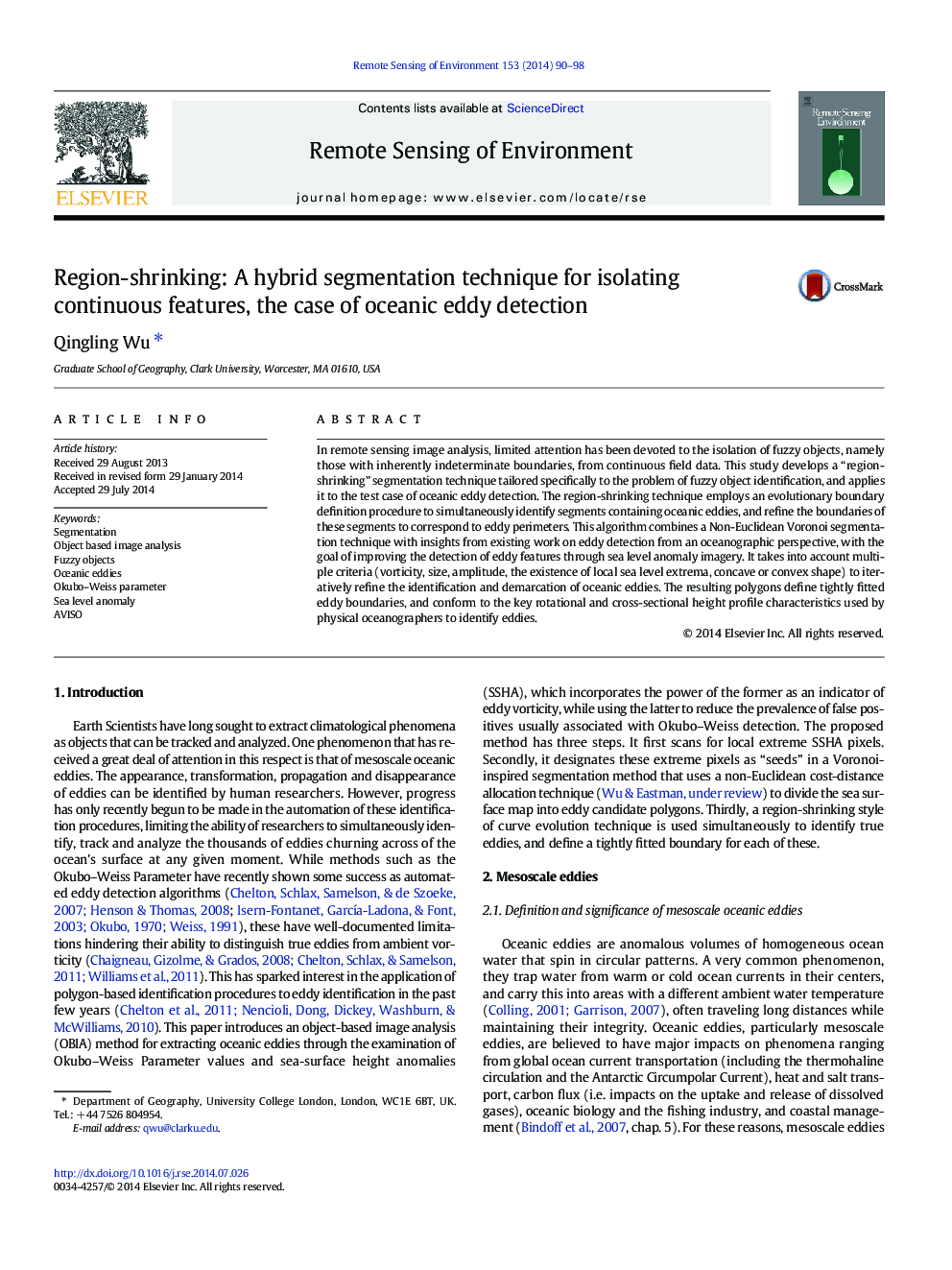| Article ID | Journal | Published Year | Pages | File Type |
|---|---|---|---|---|
| 6346298 | Remote Sensing of Environment | 2014 | 9 Pages |
Abstract
In remote sensing image analysis, limited attention has been devoted to the isolation of fuzzy objects, namely those with inherently indeterminate boundaries, from continuous field data. This study develops a “region-shrinking” segmentation technique tailored specifically to the problem of fuzzy object identification, and applies it to the test case of oceanic eddy detection. The region-shrinking technique employs an evolutionary boundary definition procedure to simultaneously identify segments containing oceanic eddies, and refine the boundaries of these segments to correspond to eddy perimeters. This algorithm combines a Non-Euclidean Voronoi segmentation technique with insights from existing work on eddy detection from an oceanographic perspective, with the goal of improving the detection of eddy features through sea level anomaly imagery. It takes into account multiple criteria (vorticity, size, amplitude, the existence of local sea level extrema, concave or convex shape) to iteratively refine the identification and demarcation of oceanic eddies. The resulting polygons define tightly fitted eddy boundaries, and conform to the key rotational and cross-sectional height profile characteristics used by physical oceanographers to identify eddies.
Related Topics
Physical Sciences and Engineering
Earth and Planetary Sciences
Computers in Earth Sciences
Authors
Qingling Wu,
